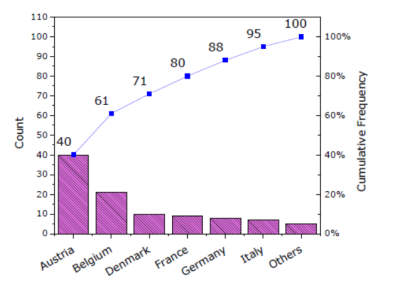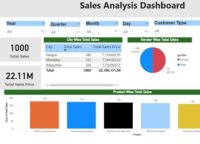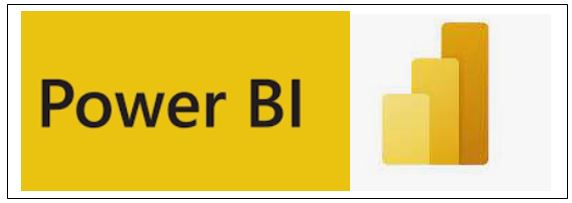The DP-600 exam, Implementing Analytics Solutions Using Microsoft Fabric, validates skills in designing and deploying Microsoft Fabric solutions for data analytics. This certification demonstrates proficiency in areas such as data ingestion, storage, processing, and visualization, essential for leveraging Microsoft’s analytics capabilities to drive business intelligence across industries.
What is the DP-600 Exam?
Microsoft Fabric is an all-in-one analytics solution for enterprises that covers everything from data movement to data science, Real-Time Analytics, and business intelligence

Microsoft DP-600 Exam Topics:
Plan, Implement, and Manage Data Analytics Solutions (10–15%):
Detailed planning and execution of data analytics solutions to meet business requirements.
Prepare and Serve Data (40–45%):
Focuses on preparing data for analysis through extraction, transformation, and loading (ETL) processes.
Implement and Manage Semantic Models (20–25%):
Implementation and management of semantic models to understand data relationships.
Explore and Analyze Data (20–25%):
Utilizing data analytics tools to explore and derive insights from data.
This certification is valuable for professionals leveraging Microsoft Fabric to develop scalable analytics solutions for data-driven decision-making in today’s business landscape.
Microsoft Fabric DP-600 Free Questions
1. You have a Fabric tenant that contains a lakehouse.
You plan to query sales data files by using the SQL endpoint. The files will be in an Amazon Simple Storage Service (Amazon S3) storage bucket. You need to recommend which file format to use and where to create a shortcut.
Which two actions should you include in the recommendation?
Each correct answer presents part of the solution.
NOTE: Each correct answer is worth one point.
A. Create a shortcut in the Files section.
B. Use the Parquet format
C. Use the CSV format.
D. Create a shortcut in the Tables section.
E. Use the delta format.
View Answer
2. You have a Fabric tenant that contains a semantic model. You need to prevent report creators from populating visuals by using implicit measures.
What are two tools that you can use to achieve the goal?
Each correct answer presents a complete solution.
NOTE: Each correct answer is worth one point.
A. Microsoft Power BI Desktop
B. Tabular Editor
C. Microsoft SQL Server Management Studio (SSMS)
D. DAX Studio
View Answer
3. You have a Fabric tenant that contains a semantic model. The model uses Direct Lake mode. You suspect that some DAX queries load unnecessary columns into memory. You need to identify the frequently used columns that are loaded into memory.
What are two ways to achieve the goal?
Each correct answer presents a complete solution.
NOTE: Each correct answer is worth one point.
A. Use the Analyze in Excel feature.
B. Use the Vertipaq Analyzer tool.
C. Query the $system.discovered_STORAGE_TABLE_COLUMN-iN_SEGMeNTS dynamic management view (DMV).
D. Query the discover_hehory6Rant dynamic management view (DMV).
View Answer
4. You have a Fabric tenant that contains a complex semantic model. The model is based on a star schema and contains many tables, including a fact table named Sales. You need to create a diagram of the model. The diagram must contain only the Sales table and related tables. What should you use from Microsoft Power Bl Desktop?
A. Data categories
B. Data view
C. Model view
D. DAX query view
View Answer
5. You have a Fabric tenant that contains a lakehouse named Lakehouse1. Lakehouse1 contains a subfolder named Subfolder1 that contains CSV files. You need to convert the CSV files into the delta format that has V-Order optimization enabled. What should you do from Lakehouse explorer?
A. Use the Load to Tables feature.
B. Create a new shortcut in the Files section.
C. Create a new shortcut in the Tables section.
D. Use the Optimize feature.
View Answer
6. You have a Fabric tenant that contains a lakehouse named lakehouse1. Lakehouse1 contains an unpartitioned table named Table1.
You plan to copy data to Table1 and partition the table based on a date column in the source data.
You create a Copy activity to copy the data to Table1.
You need to specify the partition column in the Destination settings of the Copy activity.
What should you do first?
A. From the Destination tab, set Mode to Append.
B. From the Destination tab, select the partition column,
C. From the Source tab, select Enable partition discovery
D. From the Destination tab, set Mode to Overwrite.
View Answer
7. Which type of data store should you recommend in the AnalyticsPOC workspace?
A. a data lake
B. a warehouse
C. a lakehouse
D. an external Hive metaStore
View Answer
8. You have a Fabric tenant that contains a warehouse. The warehouse uses row-level security (RLS). You create a Direct Lake semantic model that uses the Delta tables and RLS of the warehouse. When users interact with a report built from the model, which mode will be used by the DAX queries?
A. DirectQuery
B. Dual
C. Direct Lake
D. Import
View Answer
9. You have a Fabric tenant that contains a semantic model named Model1. Model1 uses Import mode. Model1 contains a table named Orders. Orders has 100 million rows and the following fields.

You need to reduce the memory used by Model1 and the time it takes to refresh the model.
Which two actions should you perform?
Each correct answer presents part of the solution.
NOTE: Each correct answer is worth one point.
A. Split OrderDateTime into separate date and time columns.
B. Replace TotalQuantity with a calculated column.
C. Convert Quantity into the Text data type.
D. Replace TotalSalesAmount with a measure.
View Answer
10. What should you recommend using to ingest the customer data into the data store in the AnatyticsPOC workspace?
A. a stored procedure
B. a pipeline that contains a KQL activity
C.a Spark notebook
D.a dataflow
View Answer



